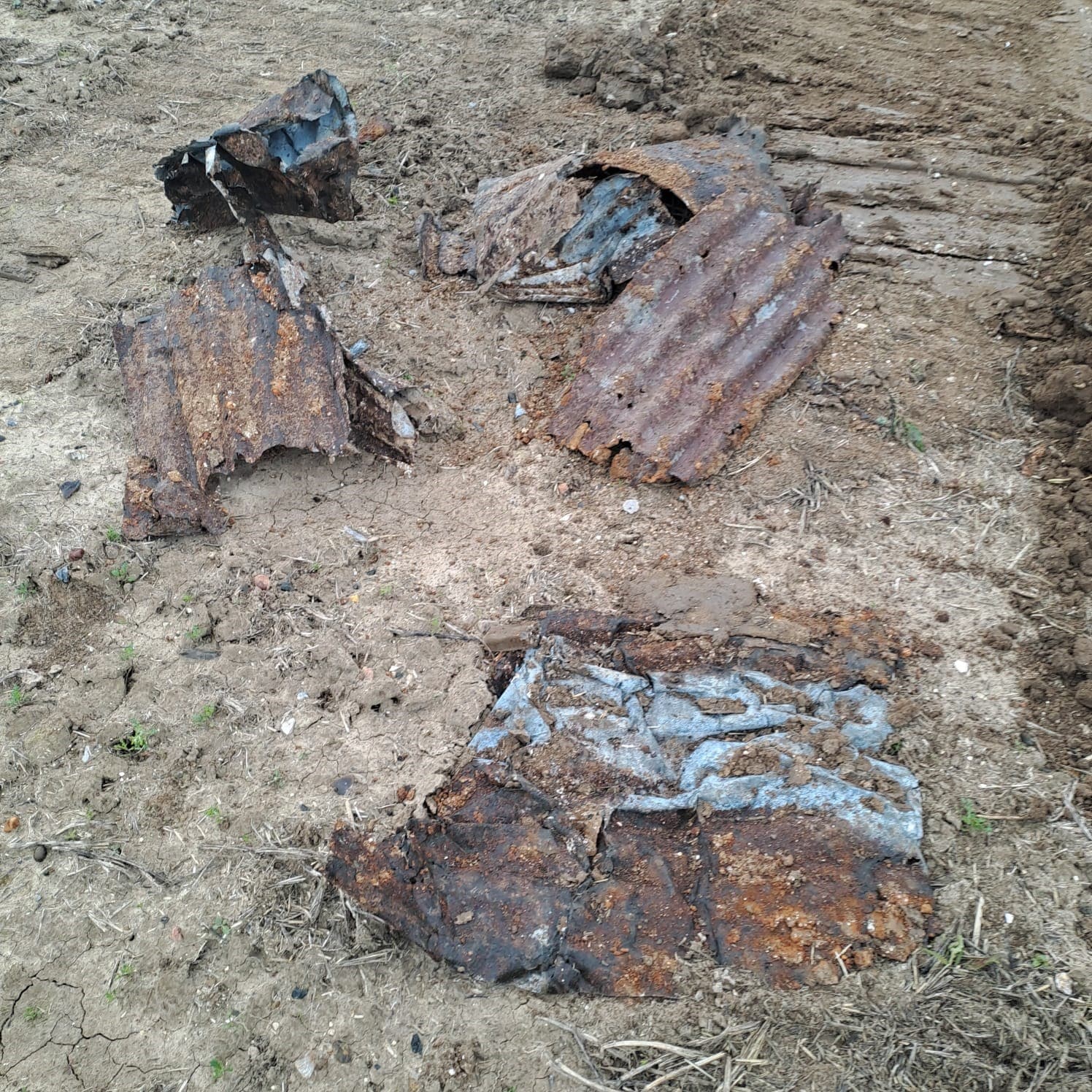1st Line Defence were contacted in early summer 2024 to commence a UXO Target Investigation operation on an area of land north of a WWII-era airfield in Kent.
We had undertaken a Non-Intrusive UXO Survey of the site in December 2022, and had modelled a number of buried ferrous anomalies which were had recommended for further investigation. The client had been informed that there was a potential risk of UXO at the site of their development, and having undertaken some research of our own – we identified that the site was ‘at risk’.
Despite the site being outside of the airfield perimeter track on WWII-era RAF Site Plans, and separated from the airfield by fields, our research suggested that the site had been utilised by the military during the war. Historic aerial photography appeared to show trenches within the site area, and an area of rough/disturbed ground – similar in appearance to land used for disposal of explosive ordnance.
The same area had been identified on 1942 Luftwaffe reconnaissance photography as a ‘small fighting area’, suggesting that the German military considered that the land may have been used for training (see image below). It was considered that if the land had been used for training and/or disposal, that items of UXO might still be present as the site area had not been subject to any development post-war.


A total of 150 ferrous anomalies were investigated by one of our EOD Engineers. During this work, significant evidence of the trench system seen on aerial imagery was found – from corrugated iron sheets to metal bars and supports.


1st Line Defence also recovered seven inert high explosive grenades and a number of fly-off levers, a live grenade, an ammunition tin – and a total of 52 partially burnt out 4lb British Incendiary Bombs. The Incendiary Bombs were all in one area suggesting they had been buried/burnt in a pit to dispose of them. Around 10kg of unburnt thermite (originating from the Incendiary Bombs) was also recovered, and the live 36 Mills grenade was disposed of by the Ministry of Defence (MoD).



What is a 4lb Incendiary Bomb?
The 4lb Incendiary bomb was the standard light incendiary bomb used by Bomber Command during WWII. The bomb consisted of a magnesium body with a cast iron/steel nose. The bomb was filled with thermite incendiary pellets and was capable of burring for up to ten minutes, the magnesium body added to the incendiary effect.
Schematic diagram of 4lb British Incendiary Bomb.
There was also a high explosive version and delayed high explosive versions (2-4 minutes) which were intended to hinder fire services. The hexagonal body measured some 545mm in length by 42mm diameter. They were produced in massive quantities. In 1944, 35.8 million bombs were manufactured (a decrease due to more bombs arriving from the US).
They were deployed in tin-plate containers – see below, the image shows Armourers preparing a Small Bomb Container (SBC) of 4lb Incendiary Bombs. The bombs caused massive firestorms across many German cities and towns, largely due to the vast numbers which were deployed.
Small Bomb Container of 4lb Incendiary Bombs. Image source: Imperial War Museum.
Information source: http://www.wwiiequipment.com/













